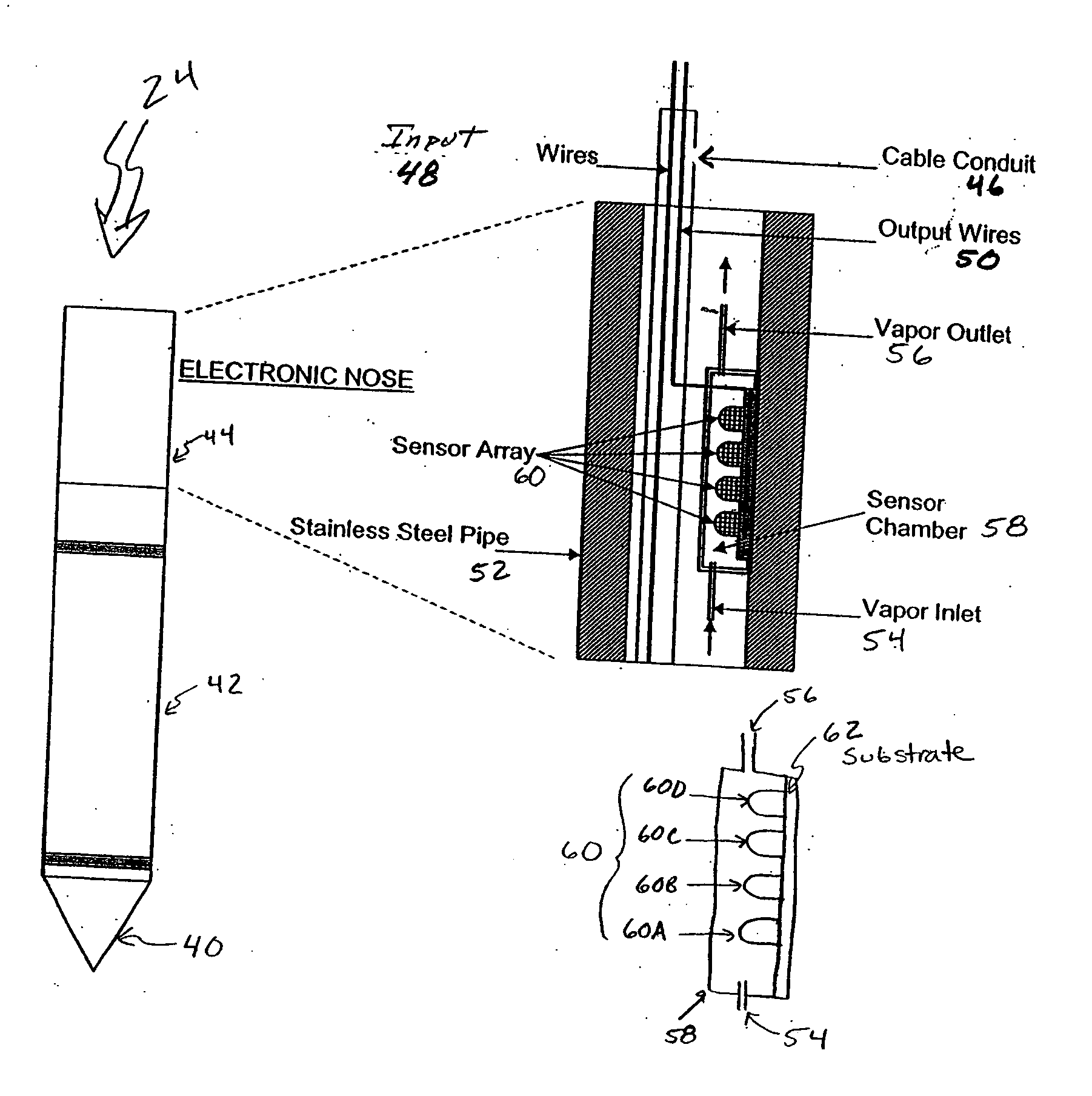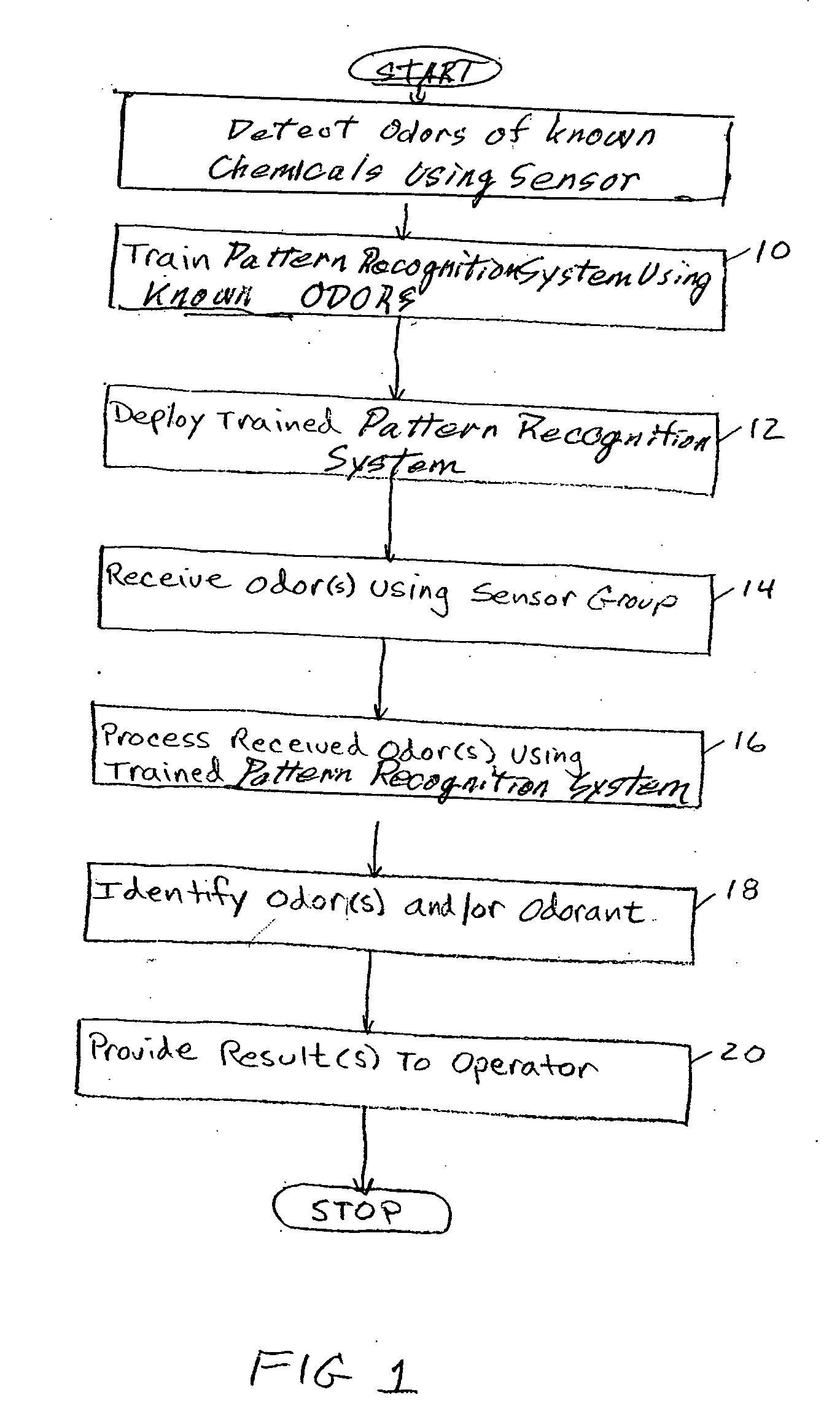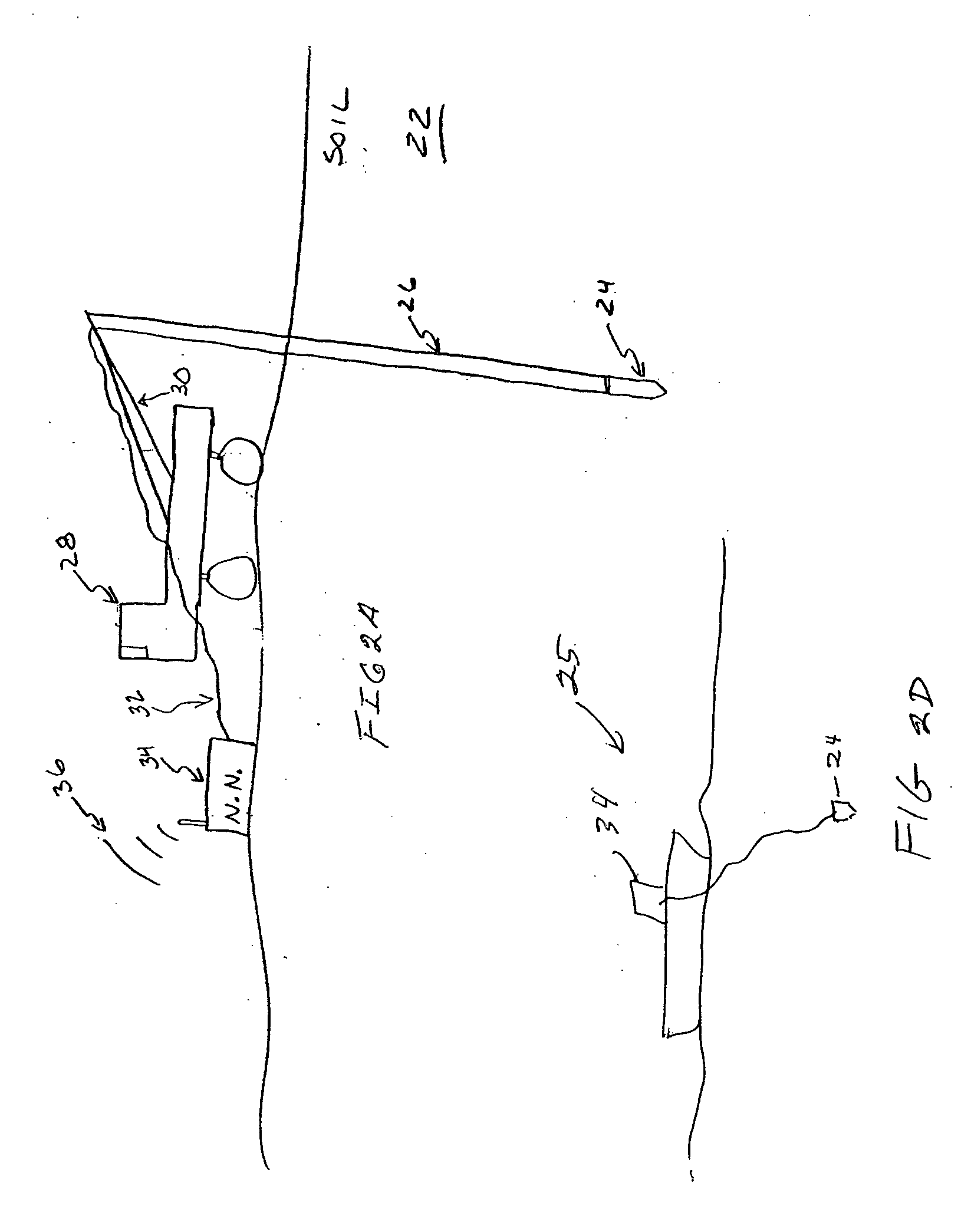Electronic nose for chemical sensing
a technology of electronic nose and chemical sensing, which is applied in the field of electronic nose for chemical sensing, can solve the problems of time-consuming and undesirable field use of machine-based classification systems, and achieve the effect of avoiding product deterioration, contamination or damag
- Summary
- Abstract
- Description
- Claims
- Application Information
AI Technical Summary
Benefits of technology
Problems solved by technology
Method used
Image
Examples
Embodiment Construction
[0025] Embodiments described herein detect and classify certain chemicals in a fluid medium using a neural network based processor. The substances or chemicals of interest are detected by the system using electronic and / or electromechanical sensors. The sensors convert the detection of certain substances into electrical signals which are conveyed to a pattern recognition system, such as neural network, and a result is generated.
[0026]FIG. 1 illustrates an exemplary method for classifying an odor using a preferred embodiment. The method starts with training of a neural network, for example, using known odors (per step 10). Once the neural network is trained, it is deployed (per step 12). The deployed system receives one or more odors using a sensor group (per step 14). The received odors are processed using the neural network which, in a preferred embodiment, is an artificial neural network (per step 16) and one or more results are generated. The results provide identification of od...
PUM
 Login to View More
Login to View More Abstract
Description
Claims
Application Information
 Login to View More
Login to View More - R&D
- Intellectual Property
- Life Sciences
- Materials
- Tech Scout
- Unparalleled Data Quality
- Higher Quality Content
- 60% Fewer Hallucinations
Browse by: Latest US Patents, China's latest patents, Technical Efficacy Thesaurus, Application Domain, Technology Topic, Popular Technical Reports.
© 2025 PatSnap. All rights reserved.Legal|Privacy policy|Modern Slavery Act Transparency Statement|Sitemap|About US| Contact US: help@patsnap.com



